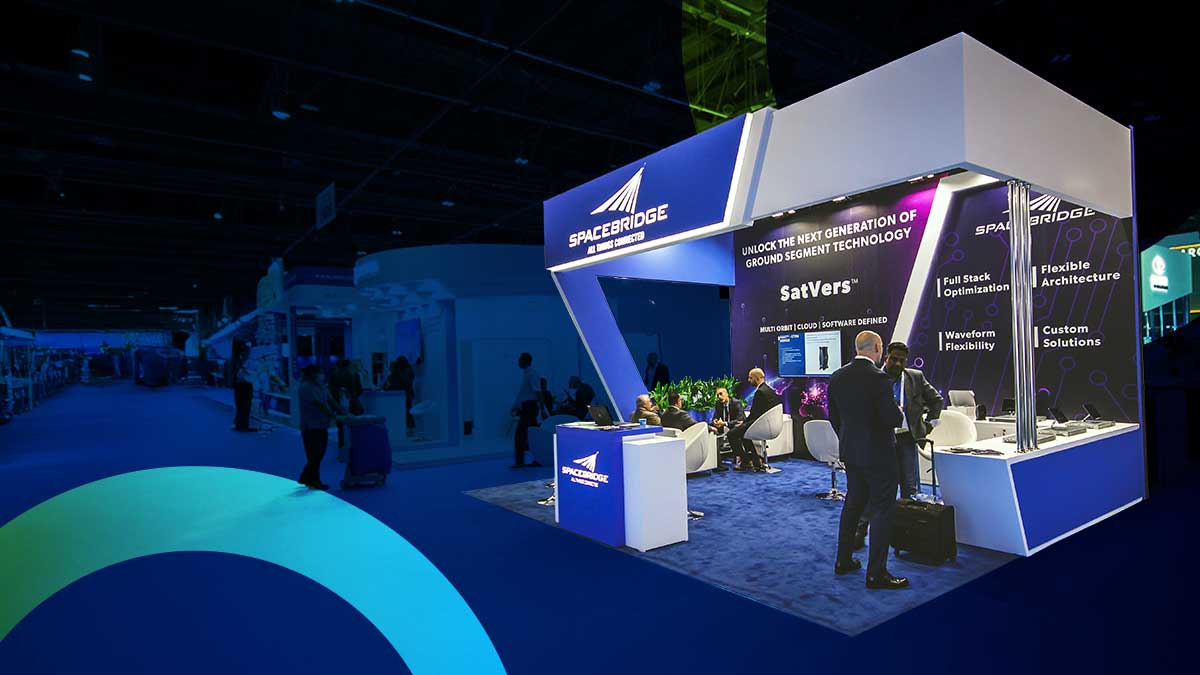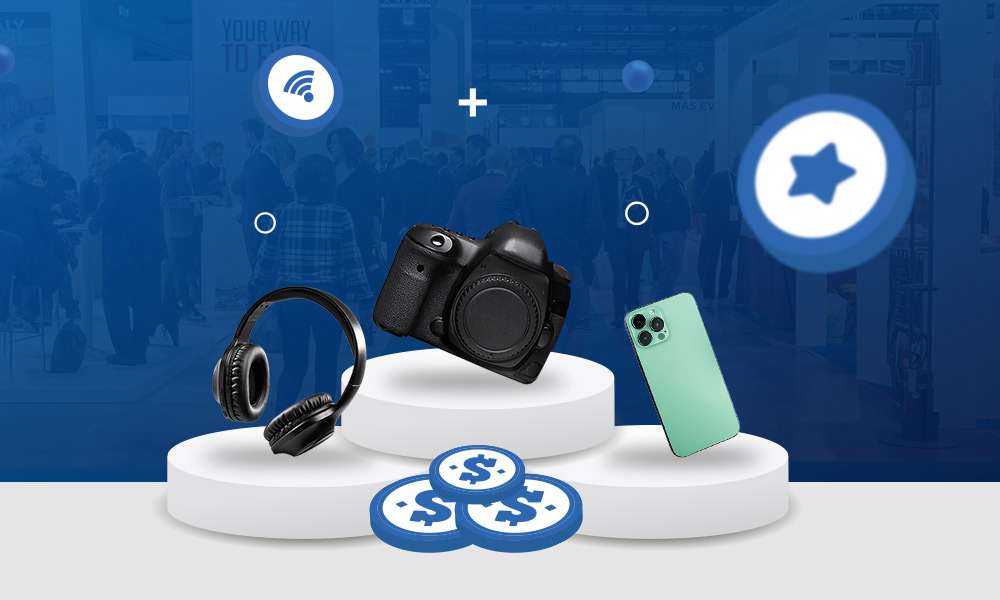What Is a Lead Magnet and Its Impact on Trade Shows?

Have you ever tried fishing without bait? That’s exactly what attending a trade show without a lead magnet feels like—ineffective and frustrating.
For B2B marketing managers, sales teams, and event planners, lead generation at trade shows can often seem like casting a net blindly, hoping for results. The secret to success? Understanding what a lead magnet is and how to use it strategically.
An effective lead magnet not only captures attention but also draws potential clients directly into your sales funnel. For business owners aiming to boost their trade show ROI, mastering the art of crafting the right lead magnet is crucial.
In this article, we’ll explore the essentials of lead magnets, giving you the tools to transform casual attendees into high-value leads that drive business growth.
What is a Lead Magnet?

A lead magnet is a marketing tool designed to capture the attention of potential customers in exchange for their contact information, such as an email address and phone number.
The goal is simple: offer something of value that resonates with your audience, enticing them to share their details.
At trade shows, where competition for attention is fierce, a well-designed lead magnet can make all the difference in generating qualified leads.
Let’s identify some key components for lead magnets. According to Alore, we have:
- High Perceived Value: The offer must be valuable enough for someone to exchange their information.
- Specificity: A targeted solution to a specific problem ensures your lead magnet appeals to the right audience.
- Instant Gratification: Attendees want quick access to your offer; the faster they can get it, the better.
- Demonstrates Your Expertise: The lead magnet should show off your knowledge and capabilities in your industry.
- Usability and Accessibility: It must be easy to use or access immediately at the trade show.
- Alignment with Your Product or Service: The offer should naturally tie back to what your business provides.
- Clear Call to Action (CTA): Guide them on the next step, whether it’s signing up, downloading, or scheduling.
- Professional Design: A clean, well-branded design reflects professionalism and builds trust.

For B2B businesses, lead magnets are particularly crucial at trade shows.
Lead magnets provide a direct method of engaging attendees, capturing qualified leads, and nurturing relationships long after the event ends.
By offering value upfront, they help bridge the gap between casual interest and a potential sale, making them an essential tool in your trade show marketing arsenal.
How to Create a Lead Magnet for Trade Shows
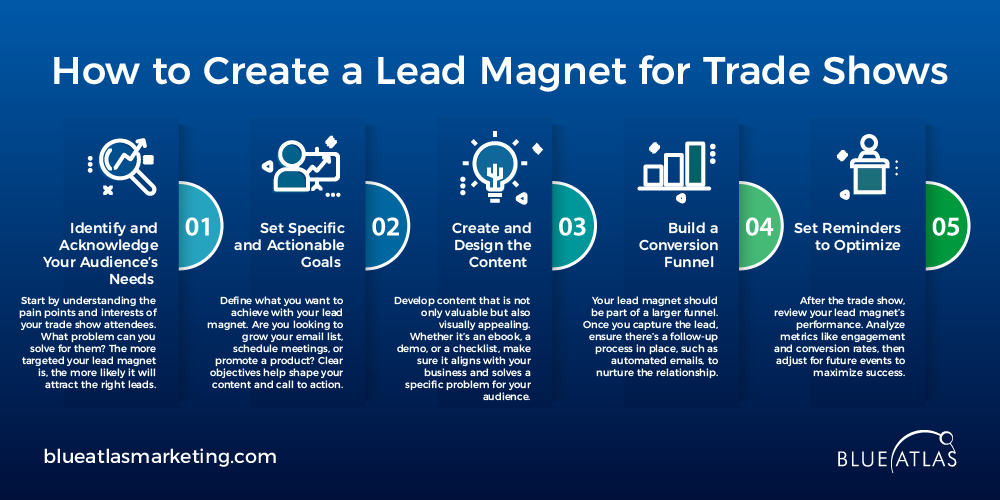
Creating a successful lead magnet for trade shows involves a strategic approach to engage attendees and convert them into valuable leads. Follow these steps to ensure your lead magnet stands out and delivers results.
- Identify and Acknowledge Your Audience’s Needs – Start by understanding the pain points and interests of your trade show attendees. What problem can you solve for them? The more targeted your lead magnet is, the more likely it will attract the right leads.
- Set Specific and Actionable Goals – Define what you want to achieve with your lead magnet. Are you looking to grow your email list, schedule meetings, or promote a product? Clear objectives help shape your content and call to action.
- Create and Design the Content – Develop content that is not only valuable but also visually appealing. Whether it’s an ebook, a demo, or a checklist, make sure it aligns with your business and solves a specific problem for your audience.
- Build a Conversion Funnel – Your lead magnet should fit into a larger funnel. After capturing the lead, use email marketing with automated follow-up emails to nurture the relationship effectively.
- Set Reminders to Optimize – After the trade show, review your lead magnet’s performance. Analyze metrics like engagement and conversion rates, then adjust for future events to maximize success.
Analyze metrics like engagement and conversion rates, then adjust for future events to maximize success.
Lead Magnet Examples for Trade Shows
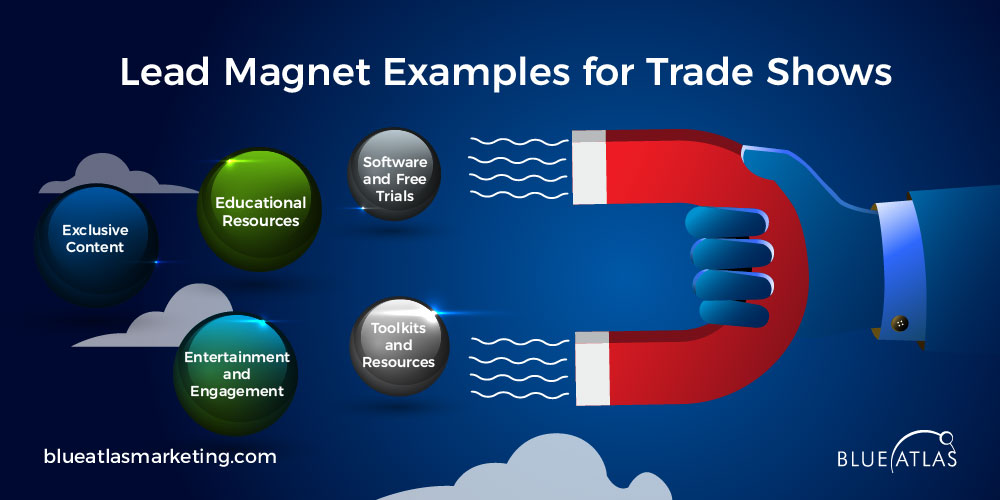
Selecting the correct type of lead magnet is a foundation for attracting the right audience at a trade show. Your choice should reflect the event’s nature and your target audience’s preferences.
If you’re at a tech-focused trade show, offering a free trial of your software, a product demo, or access to an exclusive webinar could be an effective lead magnet.
These options appeal to tech-savvy professionals who value hands-on experience with tools and solutions. On the other hand, a more creative or educational event may call for a different approach.
Here, you might find that offering guides, checklists, or downloadable templates resonates better with the attendees. The key is tailoring the lead magnet to your specific industry and audience, ensuring it offers genuine value.
Listed below are some practical lead magnet ideas for trade shows:
- Educational Resources – Free ebooks, guides, or webinars that offer in-depth knowledge.
- Toolkits and Resources – Attendees can use checklists, worksheets, or template swipe files immediately.
- Software and Free Trials – Providing access to free tools or software trials that showcase your product’s capabilities.
- Entertainment and Engagement – Quizzes, assessments, contests, or giveaways to drive interaction.
- Exclusive Content – Invitations to insider groups, special reports, or valuable insights on industry trends.
Selecting the right type of lead magnets not only engages attendees at the trade show but also attracts new leads that can be nurtured into long-term business opportunities through effective marketing strategies.
Best Practices for Using Lead Magnets at Trade Shows
Integrating your lead magnet seamlessly into your overall strategy is critical to maximizing its effectiveness at a trade show.
This ensures attendees notice your offer and are encouraged to engage with it.
How to integrate lead magnets into your trade show strategy
First, focus on strategic placement. Make sure your lead magnet is prominently displayed at your booth, where attendees can easily see and access it.
Clear signage is equally important—highlight the value of your lead magnet with well-designed banners or digital displays that communicate its benefits at a glance.
Finally, ensure thematic consistency. Your lead magnet should align with the design and messaging of your booth, reinforcing your brand and the message you’re trying to convey to attendees.
Integration is not just about the magnet itself but about how it fits into your broader event presence.
Measuring the effectiveness of your lead magnet
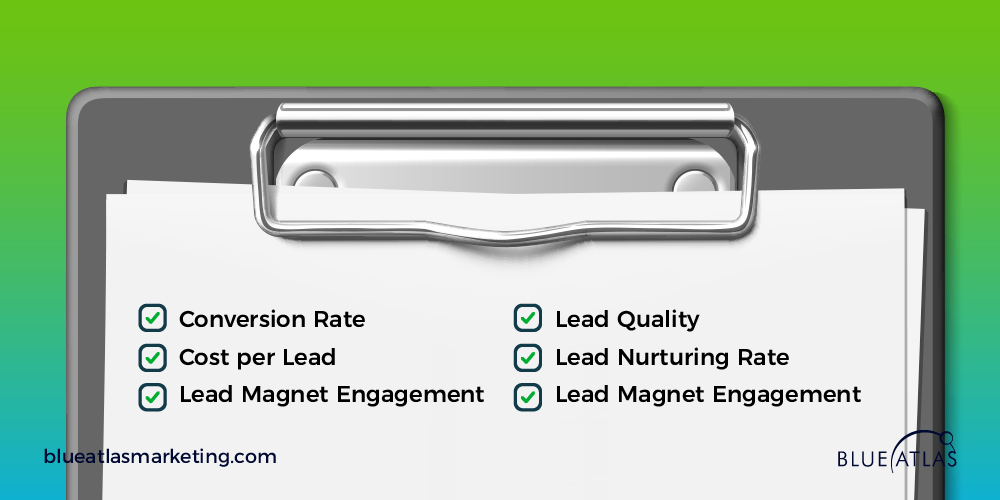
Once your lead magnet is up and running at a trade show, measuring its effectiveness is essential. Tracking specific metrics ensures you’re generating the right leads and maximizing your return on investment.
Here are the key metrics to focus on:
- Conversion Rate – Measure how many attendees interacted with your lead magnet and provided their information. For example, if 200 people visited your booth and 50 signed up for a demo, your conversion rate is 25%.
- Cost per Lead – Calculate the total cost of your lead magnet (design, printing, etc.) and divide it by the number of leads you captured. If you spent $1,000 and gained 100 leads, your cost per lead is $10.
- Lead Magnet Engagement – Analyze how attendees interact with your magnet. For instance, are they downloading the resource or engaging with your quiz? High engagement usually correlates with higher lead quality.
- Lead Quality – Focus not just on quantity but also on the value of the leads. Are the people engaged with your lead magnet aligned with your target audience? Tracking the qualification of leads helps fine-tune your approach.
- Lead Nurturing Rate – Monitor how many leads move through your sales funnel after engaging with the magnet. For example, if 50 people sign up for a demo, how many schedule a follow-up meeting?
- Lead Conversion Rate – This final metric shows how many leads turn into paying customers. For example, if 10 out of 50 demo signups convert into sales, your lead conversion rate is 20%.
Remember to keep an eye on these metrics. By doing so, you can optimize your lead magnets for future trade shows and ensure they deliver the best results.
What to Avoid When Creating Lead Magnets for Trade Shows
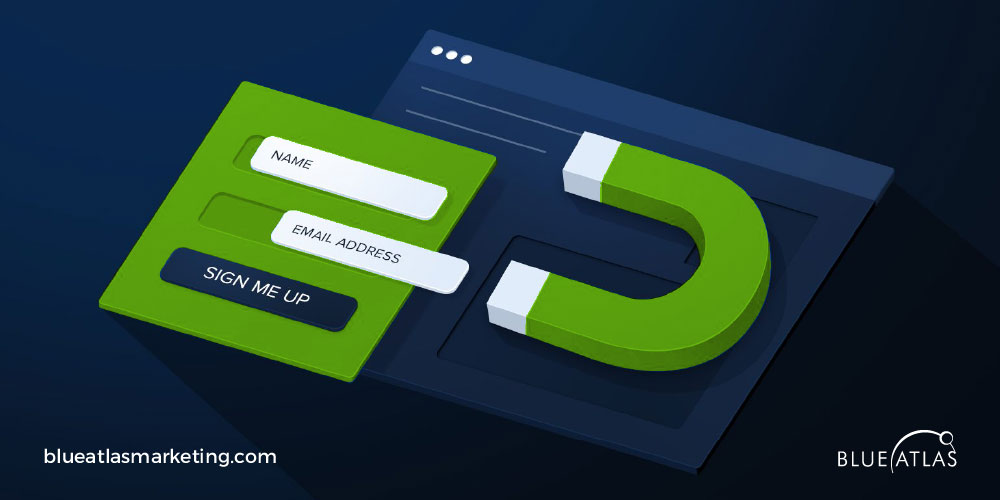
While lead magnets can be highly effective, they’re not without their challenges. Many businesses fall into common traps that hinder the success of their trade show efforts.
Here are some mistakes to watch out for:
- Solving the Wrong Problem for the Wrong Audience. If your lead magnet doesn’t align with the needs of your audience, it won’t resonate. Always ensure it addresses a specific pain point relevant to your target market.
- Too Many Lead Magnets. Offering too many options can overwhelm attendees. Stick to one well-crafted lead magnet to keep things simple and focused.
- The Lead Magnet is Too Big. If the offer is too complex or requires too much effort to engage with, attendees may not bother. Keep it quick and easy to access.
- Not Designing the Client Journey. A lead magnet is just the beginning. Failing to plan the follow-up steps means missing out on valuable opportunities to nurture leads.
- Your Lead Magnet Fails to Entice. If the offer doesn’t seem valuable or relevant enough, attendees won’t engage. Make sure it provides immediate, tangible value.
To avoid these pitfalls, focus on understanding your audience, simplifying your offer, and planning the journey after capturing the lead. Ensure your lead magnet provides clear value and is easy to access, keeping the process smooth and enticing.
Understanding what a lead magnet is and its value at trade shows is key to boosting your B2B marketing efforts. Offering targeted, valuable content can capture qualified leads, nurture relationships, and drive business growth. From carefully crafting your lead magnet to measuring its effectiveness, each step is vital to your success.
Frequently Asked Questions (FAQs)
What are some examples of effective lead magnets for trade shows?
Effective lead magnets for trade shows include e-books, free trials, checklists, webinars, and quizzes. These tools provide value to attendees while capturing their contact details for future engagement.
How can I ensure my lead magnet stands out at a trade show?
To stand out, your lead magnet should offer immediate value and solve a specific problem for your audience. Strategic placement, clear signage, and a visually appealing design are key to grabbing attention.
What are the key metrics to track the success of my trade show lead magnet?
Important metrics include conversion rate, cost per lead, lead magnet engagement, lead quality, nurturing rate, and lead conversion rate. Tracking these helps you assess the performance and optimize for future events.
Ready to maximize your trade show ROI?
Let Blue Atlas Marketing assist you in creating lead magnets that drive results and elevate your overall strategy with our expert trade show marketing services. Contact us today to begin transforming your trade show presence.


